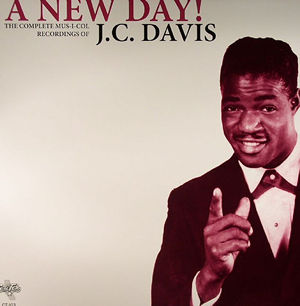I’d wanted to check out
Fred Neil for many years, but just never got around to it until recently. In January, I went to New York City and stood on the corner of Bleecker and MacDougal, taking in the famed Café Wha?, and thought to myself, man, I should really pick up that Fred Neil record when I get back home. And so it was that I finally made the acquaintance of one of the great legends of our times.

Fred Neil – Bleecker & MacDougal
While I certainly dig a lot of sixties folk music, much of it sounds the same to me. But the instant I dropped the needle on that Neil record for the first time, I knew that this man was something special. Mystical. That voice, the one John Sebastian dubbed a “
honey-laden baritone with the Southern lilt,” it got way under my skin. His songs, self-penned, timeless, many of them already familiar to these ears by way of innumerable cover versions, they stuck with me. They res-o-nated.
From
Bleecker & MacDougal, “Other Side to This Life” became a staple in the sixties songbook and was covered by the likes of Peter, Paul, and Mary, The Youngbloods, The Animals, The Lovin' Spoonful, and the Jefferson Airplane. Here is a 1965 recording of
Gram Parsons, back when he was just another folkie, performing this song, along with Neil’s original.
Gram Parsons – Another Side of This LifeFred Neil – Other Side to This LifeAnd, from the same album, Neil’s “Candy Man” was also a modest hit for
Roy Orbison.
Roy Orbison – Candy ManFred Neil – Candy ManNeil’s influence on the Greenwich Village folk scene of the early-to-mid-sixties is difficult to overestimate. By most accounts, he, along with
Dylan, were the best of a talented bunch that also included Mr. Sebastian, Odetta, David Crosby, Stephen Stills, and Richie Havens.

Bob Dylan, Karen Dalton and Fred Neil
at the Cafe Wha? Feb. 1961
Among his fellow folk song purists, Neil stood out, with his mournful and emotional voice adding experience far beyond his years. And Fred not only kept the classic folk songs alive (his interpretation of the traditional, 'Cocaine', was bone-chilling), he was writing his own songs. Few of the Village performers were contributing new material in their efforts to carry forward the folk tradition. In Fred's case, you couldn't really tell that he was. His songs sounded as old and road-weary as his voice did.
—Rush Evans, Discoveries magazine, September 2001 issue.

And so, after playing the hell out of
Bleecker & MacDougal, I bought his second solo record, the self-titled one that most fans consider his finest hour. While still a folk album, Neil has fleshed out his sound by adding electricity and drums to his bag of tricks. “The Dolphins” opens the album with a wash of reverb and a touch of Eastern influence and stands as one of his greatest creations, while most famously, the record features the song “Everybody's Talkin’”, covered by more than a hundred artists and
made famous by Harry Nilsson in
Midnight Cowboy.
Fred Neil – The DolphinsFred Neil – Everybody’s Talkin’The intensely private Neil was an enigma to most, even to those who knew him best. He detested the promotional trappings of the music industry and refused to play that game, declining opportunities to perform on the Tonight Show and the Johnny Cash Show as well as turning down a tour with Harry Belafonte. Throughout his entire life he only granted
one interview, to
Hit Parader in 1966.

He would go on to record only a couple more records before withdrawing from public life and retreating to his beloved Florida. There, he would explore his lifelong love and passion for dolphins, dedicating the rest of his life to dolphin research and preservation. When he did make a rare public appearance, it was nearly always in conjunction with the
Dolphin Project, an organization he co-founded in 1970, dedicated to preventing the capture and exploitation of dolphins worldwide. He passed away quietly in 2001.
FredNeil.com
 Saving the best for last, I finally watched
Saving the best for last, I finally watched 


 I don’t remember exactly where I first heard about the North Carolina band called
I don’t remember exactly where I first heard about the North Carolina band called  It was early January when I chanced across a review on the
It was early January when I chanced across a review on the 


 While I certainly dig a lot of sixties folk music, much of it sounds the same to me. But the instant I dropped the needle on that Neil record for the first time, I knew that this man was something special. Mystical. That voice, the one John Sebastian dubbed a “
While I certainly dig a lot of sixties folk music, much of it sounds the same to me. But the instant I dropped the needle on that Neil record for the first time, I knew that this man was something special. Mystical. That voice, the one John Sebastian dubbed a “
 And so, after playing the hell out of
And so, after playing the hell out of 







